- Home
- H. R. F. Keating
Murder Must Appetize Page 3
Murder Must Appetize Read online
Page 3
Undertones of war
But this is how, tirelessly defying a ridiculed law for all the world like so many pot-smokers of today, the rich lived, unexceptionable clubmen and gentlemen of private fortune. And, of course, officers. For, though these books were written on the eve of the 1939-45 War, traces linger by the score of the perhaps more tragic affair of 1914-18. A war record was a handy way of making the reader believe, as truth or red herring, that a character was a goodie or baddie or of showing the hidden bravery beneath the placid exterior of solicitor or don. Not a little, too, of the Army hierarchy survived in chance comparisons like ‘the inevitable sense of constraint the presence of a commanding officer entails’.
Yet World War II, for. all that our writers plainly did not intend to thrust unpleasantnesses at us, cast its shadow before. ‘Dictator’ is a word to be found here, there and everywhere like self-sown forget-me-nots in easy-going gardens. The leader of a gang in Nicholas Blake’s prep school is dubbed the ‘Dictator’. Anthony Gilbert makes a reference, casual as the phrase ‘common as Dalmation dogs in town’, to arrangements being made by a private secretary (another!) ‘as efficient as a dictator’. And when, in Death Is No Sportsman, papers mapping out a business merger enter the plot the parties are said to have been moving ‘with all the mutual distrust of two dictators engaged in forming a new “axis”.’
Every now and again, too, the catastrophe ahead is cheerfully used to provide a mainspring for the action or, more usually, as a nice red herring. But in principle spies were, as one of the characters in Hamlet, Revenge remarks to the detective-story writer, ‘a species of excitement your austere art sniffs at’. Sniff we certainly did. Eric Ambler was almost as ‘common’ in our snob-clouded eyes as the Americans, and despised they were for all that writers such as Ellery Queen were producing, in American settings, books almost precisely similar to the ones we wallowed in. But it was simply not done to read them, which meant that read they were, although nobody ever boasted about it.
The Blitz: and it’s ‘murder as usual’
When the hinted-at armageddon arrived it did not, as might have been expected, bring to a sudden end the cosy world of what one of its chroniclers, Colin Watson, has neatly called ‘Mayhem Parva’. Indeed, the very opposite happened. Where once Cyril Hare’s vicar’s wife had said, ‘My husband reads a lot of those nonsensical crime novels’, now when the bombs began to fall London librarians found, according to W. B. Stevenson, one of their number, that the most used books in the shelter libraries were just these. So writers happily went on providing. Some totally ignored the cataclysm, like Gladys Mitchell’s Laurels Are Poison which was published in 1942 ‘in complete conformity with the authorised War Economy Standard,’ others took it in their stride, seizing on blackout and firewatching duties as splendid opportunities for alibi-making and alibi-faking.
Take Christianna Brand’s still highly enjoyable Suddenly at His Residence, published as late as 1947 but set in the latter days of the war. Here an out-of-the-blue flying bomb (though fairly and decently planted) ingeniously solves the awful dilemma of having made the one who done it rather too sympathetic. If you wrote about people with some sympathy (and Miss Brand certainly did), you could not leave out the person your plot had fixed on as the murderer. But having made him (or her) someone your reader felt for, what could you do at the end but something like killing him off through enemy action?
Ingenuity, applied to a literary rather than a criminological problem, generally won through. But, for better or worse, people were now the dominant note. Their presence accounted for that frequently found phrase ‘the psychological approach’, an adroit device permitting return to the novel’s proper task while yet appearing to be producing the puzzles thought to be the source of all popularity. How impossible it would have been in the 1920s to claim, as Nicholas Blake’s Nigel Strangeways is made to, ‘an intuition which had helped him more than once’. And in 1937 Michael Innes’s Appleby himself declared (showing incidentally that he too was a reader) that detective stories ‘always have a psychological drift now’.
The belated arrival of Sigmund Freud
Mr Innes’s disciple, Edmund Crispin, (a pseudonym this: was it taken from Scamnum’s Crispins, that pleasantly conceived corruption of Crippen?) is equally a swimmer in the psychological drift for all his fervid tributes to puzzledom and frivolity. ‘A crime,’ his hero, Gervase Fen, Professor of English Language and Literature in the University of Oxford, murmurs wishfully as The Case of the Gilded Fly opens, ‘a really splendidly complicated crime.’ And the murder that follows is as complex as any addict could wish, with the fatal shot fired from a courtyard in through an open window, out through another and in again through a third. Yet it is with motive that the enormous consequent explanations end, and it is with people, recognizable and attractive, that the book is concerned.
So much so indeed that there is a fearsome disparity between the individuals we meet on the page and the actions some of them commit off it which we get to hear about only in the long chapter called ‘The Case Is Closed’. This disparity I once heard called the hermeneutic aspect of the crime novel (once heard never forgotten), hermeneutics being the science of interpreting the hidden meanings of Scripture. But Mr Crispin papered over that gap with an exhilarating pattern of wit, humour, fizz and allusion. With Michael Innes, he is a champion of the quotation game, so much a part of the detective story, though he earned from the Lynx of the London Library the surely over-waspish end-page comment ‘Too donnish by half’.
It is with a book from another doughty quotationist, Ngaio Marsh, her 1941 Surfeit of Lampreys, in many ways the archetype of our new sub-genre, that it is perhaps appropriate to wind up this look at a world gone by. In the end-papers of the Collins Crime Club edition, the publishers, those canny trend-spotters, trumpet another book as ‘a story you will not put down even to listen to the news’—ah, those wireless-glued days—but the tribute might well have been used of this hymn of Miss Marsh’s set to the tune ‘Murder Must Appetize’. And it still had the power to keep me from the sucking arms of the ever-lurking telly.
In the full blast of war the book did not let even the shadow of that calamity cloud its pre-war horizon, a wholly proper acceptance of the limitations. But this does not mean that it did not acknowledge evil. It did so by the very fact that the mystery of who killed the odious Lord Wutherwood, holder of the purse strings for the delightful Lampreys, is in the end solved. Evil was not allowed to triumph. And it is this affirmation that underlay the whole genre’s popularity.
Triumphal endings, with the mystery that is proposed neatly solved, give detective stories, too, a shape and a form. This is a literary quality which wayward Englishmen seldom acknowledge, but which nonetheless has a powerful effect. It gives the feeling of satisfied enjoyment as the book is finally closed, and when Surfeit of Lampreys ends (and that is only after 316 bubbling pages) with its little New Zealand heroine about to marry the most suitable of the feckless yet genuinely attractive Lampreys, then that feeling booms quietly out in the inner depths.
The hero, Chief Detective-Inspector Roderick Alleyn, is not only possessed of a small private fortune but also notably fulfils the twin requirements of omniscience (he even knows how to deal with the most enfant terrible of the Lampreys: you could hardly be more all-wise than that) and omnipotence, displayed in solving a crime of an altogether desirable complexity depending as it does on a split-second decision by the murderer to juggle computer-deftly with the buttons of a lift. Alleyn thus in the recesses of the reader’s mind embodies, first, the fallible being who can yet thwart evil, the knight-errant of old; second, the hunter in all of us who, when foxes are hard to come by, needs vicarious exercise; and finally the Spirit of the Rational asserting in a world of doubts and mysteries that the human brain can do mighty things.
It is the Lampreys, unimpeachably upper class, who generically provide the mandatory background, free-and-easy aristocratic behaviour (listening under doo
rs, if not at keyholes, permitted) in silent contrast to the stuffy accepted pattern. Now almost of archaeological interest, it is still a mine of delights. Yet, though presented en masse, all the family are credibly characterised as people.
‘The whiff of another time’
People. That brings us full circle. People were the key to these stories because it is the continuing actions of people faced with some situation that seems to call for response that constitute, precisely, a story. And the story is a drug of powerful attraction to almost everybody there has ever been. The presence of people, indeed, was the trickle of salt that made appetizing the great pie of the puzzle book, sometimes in itself of lumpen indigestibility. That salt, too, made the pie something that often would keep long and well. So that in the end we can go back to them, the best of these books of the halcyon age, and find not only lively enjoyment but the whiff of another time, when things did not seem so serious, when it was pleasant and easy to play, when frivolities did not smack of hectic scamperings under a doom-heavy sky but were innocent and fresh and altogether proper. Long, long live then the detective story.
MARGERY ALLINGHAM (1904-1966) was meant to be a writer from the very beginning. Describing her Essex childhood she once said: “My father wrote, my mother wrote, all the weekend visitors wrote and, as soon as I could master the appallingly difficult business of making the initial marks, so did I.” At the Misses Dobsons’ Academy at Colchester she learnt only how to enter a drawing room and how to sit down at a piano, but her infant inkiness was allowed plenty of play. At Perse High School, Cambridge, she staged an immense drama of her own composition, but left at fifteen to write for Sexton Blake and Girls Cinema. At sixteen she received through psychic means ten different versions of a seventeenth-century pirate’s life which she transcribed as a romance Blackerchief Dick, her first book. Next she wrote a thriller Crime at Black Dudley in which she created Mr Albert Campion, then little more than a bouncingly expressed caricature with a considerable passing likeness to the Scarlet Pimpernel, but to develop from a usefully receptive eye to a very formidable gent indeed. Miss Allingham was married long and happily to her illustrator, P. Youngman Carter.
H.C. BAILEY (1878-1961), Daily Telegraph drama critic and leader writer, was the creator of Dr Reggie Fortune, amiable and life-enjoying consultant surgeon (specialism never recorded). In twenty books or more and dozens of unusually meaty short stories he gave us not only Dr Fortune but the engaging, Bible-quoting, disreputable solicitor Joshua Clunk. Bailey wrote novels, vaguely historical sounding, from 1901 to 1911, but in 1920 turned to crime. His last mystery Shrouded Death came out in 1950. Hard to find now, his books are worth disinterring.
JOSEPHINE BELL (1897- ) invented Detective-Inspector Mitchell, as well as a medical detective, Dr David Wintringham, featured in more than one of her fifty-nine novels. “Far too many” she says with the severity of manner that underlies a personality of great kindliness. In fact Josephine Bell has created as many detectives as need called for. With two doctor great-grandfathers, it is not surprising she ended as a G.P. herself. She saw doctoring as a chance to meet people “to put into the stories I had written, as a private but continuous activity, from the time I had learned how to write.” Married to a doctor, she was mid-way through her first crime story Murder in Hospital when her husband was killed in a road accident. So two detective stories a year helped support her four children till she could find time for mainstream novels, of which Tudor Pilgrimage was a well-praised historical example.
NICHOLAS BLAKE (1904-1972) was for a time billed as a mystery poet who had turned to detection, but before long he revealed himself as Cecil Day Lewis, finding the pretence hard to keep up as indeed he found any pretence in a life guided by the ferocious poetic honesty that marked the Auden-Spender school of the 1930s. A poetic course that moved steadily, if slowly, upwards via a spell as Oxford Professor of Poetry till in 1967 he was made Poet Laureate, was paralleled by a crime course that moved rapidly to an assured place among the very good. A working publisher at Chatto and Windus, he also for a time reviewed crime in the Sunday Telegraph. What endeared detection to him, he once told me, was its strictness of form. “No other sort of fiction has it,” he said. “You get it in the sonnet, you get it in the detective story, you get it in the blurb.” Blurb composition was his favourite publishing chore.
CHRISTIANNA BRAND (1907- ) aged almost thirty, had never thought of writing until, working as a demonstrator of Aga cookers, she found herself in such dread of her supervisor that she bought an exercise book and there and then began a story so as to murder her, pausing only prudently to transfer the setting to a dress shop. Fifteen publishers rejected Death in High Heels; but Bodley Head, looking for a successor to Agatha Christie, seized on it, printed it unaltered and sold it like a bestseller. Her next book saw the birth of chirpy Inspector Cockrill and the next, set in a military hospital such as her surgeon husband, Roland Lewis, was then working in, was Green for Danger, made into an immensely popular film. She has also written historical novels as ‘China Thomson’, many beautifully ingenious short stories and some decidedly powerful ones and, illustrated by her cousin Edward Ardizzone, delightful children’s books.
MILES BURTON (1903- ). Reference works either omit his name or give little more than some of his book titles, and indeed the identity behind this pen-name was deliberately kept secret even after the author’s death. He began producing detective stories in 1930 with The Hardware Diamonds Mystery and finished with Death Taints A Picture in 1960. There were some sixty in between. I can now reveal, by permission, that he was none other than the prolific John Rhode, q, as they say, v.
JOHN DICKSON CARR (1905- ) simply rocketed off from the more striking and lovable traits of G.K. Chesterton in order to create one of our favourite sleuths, Dr Fell. Of course, our prolific author also split himself into two, frequently choosing to write as Carter Dickson and thus leaving a fine old bibliographical tangle in his wake. But it has been a fair and frothy wake, right from the start, when this son of sometime U.S. Congressman Woods N. Carr started writing locked-room mysteries set in France with one M. Bencolin as detective, through book after book up to the present day when he still reviews regularly for Ellery Queen’s Mystery Magazine. An honorary Englishman by virtue of a long period of residence, especially in sitting out the blitz on Bristol, he once held the position of Secretary in the Detection Club.
AGATHA CHRISTIE (1890- ), preceded since 1971 by ‘Dame’, is the one name that is synonymously exchangeable for ‘detective-story’. The honour was bestowed for services to literature and, although as Mary Westmacott she has produced a handful of romances (not all that good, they tell me), it was crime-writing alone that earned her the title. Encouragingly for all who aspire in the field, her first book, written after her sister belaboured by story after story of “unrelieved gloom, in which most of the characters died” had bet her she could not produce a decent detective tale, The Mysterious Affair at Styles was rejected by six publishers before triumphing at the hands of John Lane. Each succeeding book seemed to hit the nail on the head, a good cliché to describe Mrs Christie’s splendid gift for saying the obvious in so exactly right a manner that dullness is avoided and immense popularity ensured. In 1926, when she broke the cardinal rule and made a Watson (Ssssh!) the murderer, she compounded the felony by mysteriously disappearing herself for a short time as the result of a nervous breakdown which ended in divorce from her first husband and brought on herself such a Press hoo-hah that ever since she has been solidly suspicious of all interviews. She subsequently married Sir Max Mallowan, the archaeologist. It has been a long life and one of steady output, with one curious by-product in that her Hercule Poirot, a retired policeman of at least forty in 1916 when he took refuge in England, had to be notching the 100 mark at his final appearance, arthritic but spry, in 1972 (Final in time, that is. The last Poirot, written during the 1939-45 War and kept in a solicitor’s safe since, is 1975’s ultimate contribution to the sag
a). Her other great gift to detective fiction, Miss Marple of the clicking knitting needles, began elderly and can ingeniously stay so for, I hope, ever.
G.D.H. COLE (1889-1959) was one of those very remarkable people who incidentally took to crime, together with his wife MARGARET (1893- ), a member of the Postgate family with other members of which G.D.H. collaborated at various times and one of whom, Raymond, wrote that minor crime classic Verdict of Twelve. Son of a jeweller, G.D.H. had a luminous career at pre-1914 Balliol, “a dark dynamic presence” said a contemporary, and rapidly made a name in the politics and economics of the Left as an advocate of workers’ control. His book The World of Labour had a great success in 1913 and was only the start of a stream of publications that went right on till his death, dense works of statistical research mingling with warmly-felt biographies of such people as Cobbett. Between the wars there was a ‘Cole Group’ at Oxford that attracted young inquirers who included W.H. Auden, Hugh Gaitskell, John Betjeman. In 1931 he was stricken with diabetes, an illness that made him, in his wife’s words, “write faster and faster, larger and more complicated books.” It was about this time, and up to 1942, that the twenty-nine detective stories and four volumes of short stories which he wrote, all but one, with Margaret poured out.
EDMUND CRISPIN (1921- ), whose real name is Bruce Montgomery, is another of Oxford’s generous gifts to the crime-reading community, his golden days there being spent in the company of Kingsley Amis (inveterate flirter with the crime story), Philip Larkin, John Wain, Alan Ross and Edward du Cann. His crime output has been disappointingly tricklish, only eight novels in thirty years, though there are some fifty short stories and for 1976 we are promised two books, The Glimpses of the Moon, a Crispin, and a Bruce Montgomery crime-comedy What Seems to be the Trouble? Under the Montgomery name music has poured forth more prodigally, published concert works and background scores for some forty films as well as for radio and TV. “Unmarried so far,” he writes to me in his mid-fifties, “he hopes before the end of 1975 to marry Barbara Ann Clements.” And, he adds, he “is of a sedentary habit.”

 Go West, Inspector Ghote
Go West, Inspector Ghote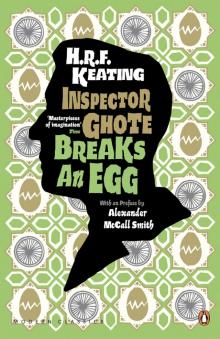 Inspector Ghote Breaks an Egg
Inspector Ghote Breaks an Egg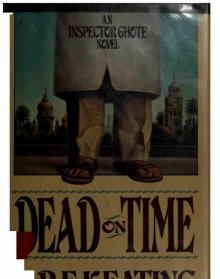 Dead on Time
Dead on Time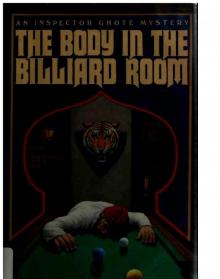 The Body in the Billiard Room
The Body in the Billiard Room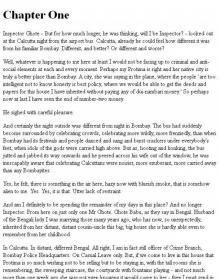 Bribery, Corruption Also
Bribery, Corruption Also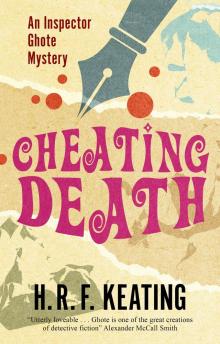 Cheating Death
Cheating Death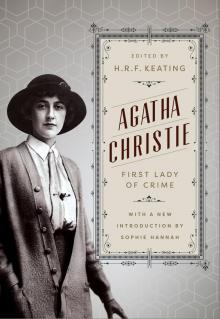 Agatha Christie
Agatha Christie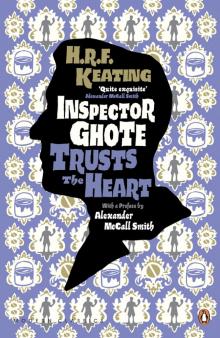 Inspector Ghote Trusts the Heart
Inspector Ghote Trusts the Heart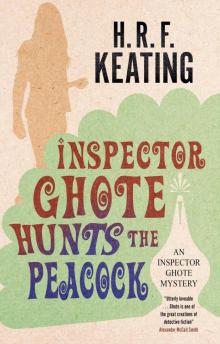 Inspector Ghote Hunts the Peacock
Inspector Ghote Hunts the Peacock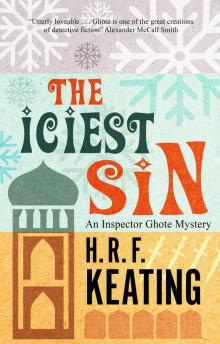 The Iciest Sin
The Iciest Sin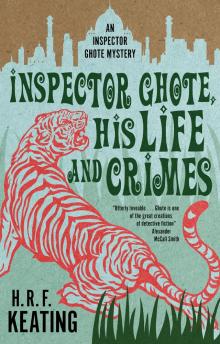 Inspector Ghote, His Life and Crimes
Inspector Ghote, His Life and Crimes Strong Man
Strong Man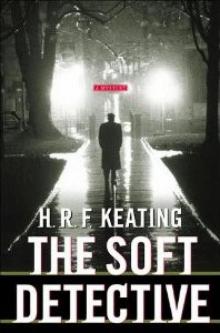 The Soft Detective
The Soft Detective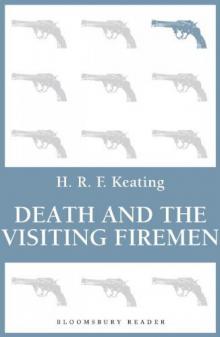 Death and the Visiting Firemen
Death and the Visiting Firemen Breaking and Entering
Breaking and Entering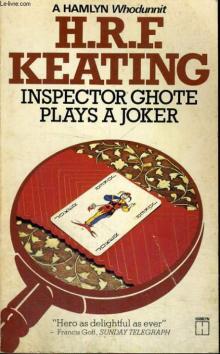 Inspector Ghote Plays a Joker
Inspector Ghote Plays a Joker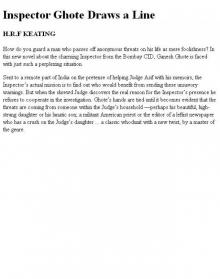 Inspector Ghote Draws a Line
Inspector Ghote Draws a Line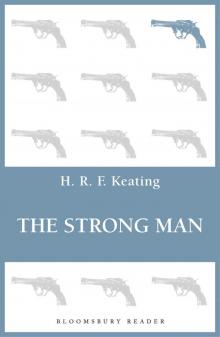 The Strong Man
The Strong Man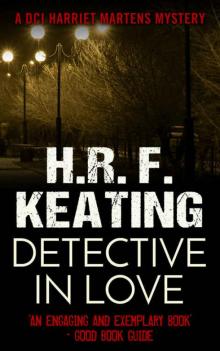 A Detective in Love (A Harriet Martens Thriller Book 2)
A Detective in Love (A Harriet Martens Thriller Book 2) The Perfect Murder: the First Inspector Ghote Mystery
The Perfect Murder: the First Inspector Ghote Mystery Inspector Ghote's Good Crusade
Inspector Ghote's Good Crusade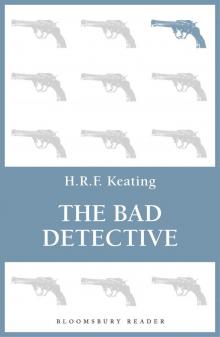 The Bad Detective
The Bad Detective The Dreaming Detective
The Dreaming Detective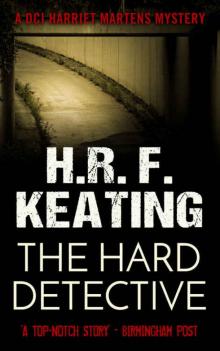 The Hard Detective (A Harriet Martens Thriller Book 1)
The Hard Detective (A Harriet Martens Thriller Book 1)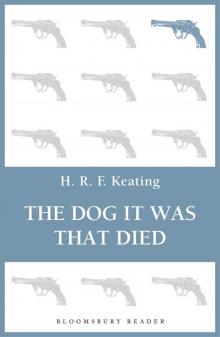 The Dog It Was That Died
The Dog It Was That Died Murder Must Appetize
Murder Must Appetize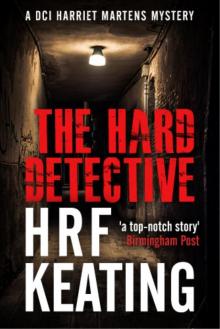 The Hard Detective
The Hard Detective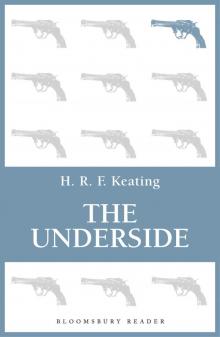 The Underside
The Underside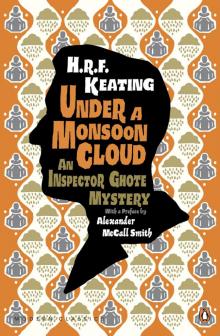 Under a Monsoon Cloud: an Inspector Ghote Mystery
Under a Monsoon Cloud: an Inspector Ghote Mystery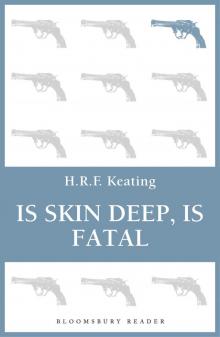 Is Skin Deep, Is Fatal
Is Skin Deep, Is Fatal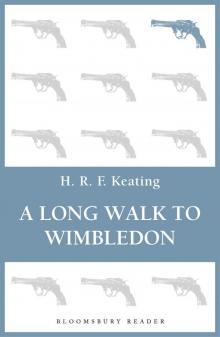 A Long Walk to Wimbledon
A Long Walk to Wimbledon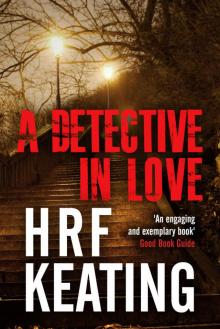 A Detective in Love
A Detective in Love A Detective at Death's Door
A Detective at Death's Door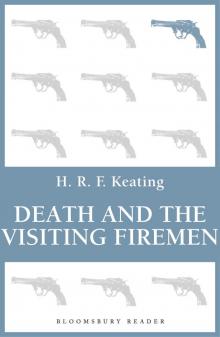 Death and the Visiting Fireman
Death and the Visiting Fireman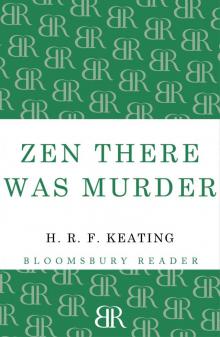 Zen there was Murder
Zen there was Murder